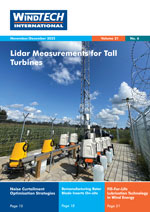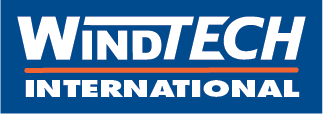 The PivotBuoy project, developed by X1 Wind in collaboration with 9 industry and R&D partners, finalised its offshore demonstration.The X30 floating wind Tension Leg Platform (TLP) was tested in full operational conditions at Plocan from October 2022 to May 2023.
The PivotBuoy project, developed by X1 Wind in collaboration with 9 industry and R&D partners, finalised its offshore demonstration.The X30 floating wind Tension Leg Platform (TLP) was tested in full operational conditions at Plocan from October 2022 to May 2023.The unit fed its electricity to Plocan’s platform via a 1.4km 20kV subsea cable. The data showed very good alignment with the wind using its passive orientation system. In terms of power production, energy generated by the modified Vestas V29 – which operates in a downwind configuration - was well aligned with theoretical models, with no sign of power loss or increased 3P vibration due to the tripod shadow. The results confirm that X1 Wind’s streamlined tripod arrangement eliminates the known drawbacks typically associated with downwind operation. In addition, the platform overcame several harsh storms, with maximum wave heights reaching 6.7 meters, equivalent to more than 20 meters in full-scale. During these extreme events, the unit behaved well with motions and accelerations matching the predictions in simulation models.
The PivotBuoy Consortium comprised of nine partners from five different countries (X1 Wind, EDP, DNV, Intecsea, DTU, WavEC, Plocan, ESM, and Degima). The project aimed to demonstrate the PivotBuoy mooring system configuration which combines the advantages of a SPM (single point mooring) with a small TLP (Tension-Leg Platform) mooring system, allowing the platform to reach deeper waters and minimising the footprint and impact on the seabed.










